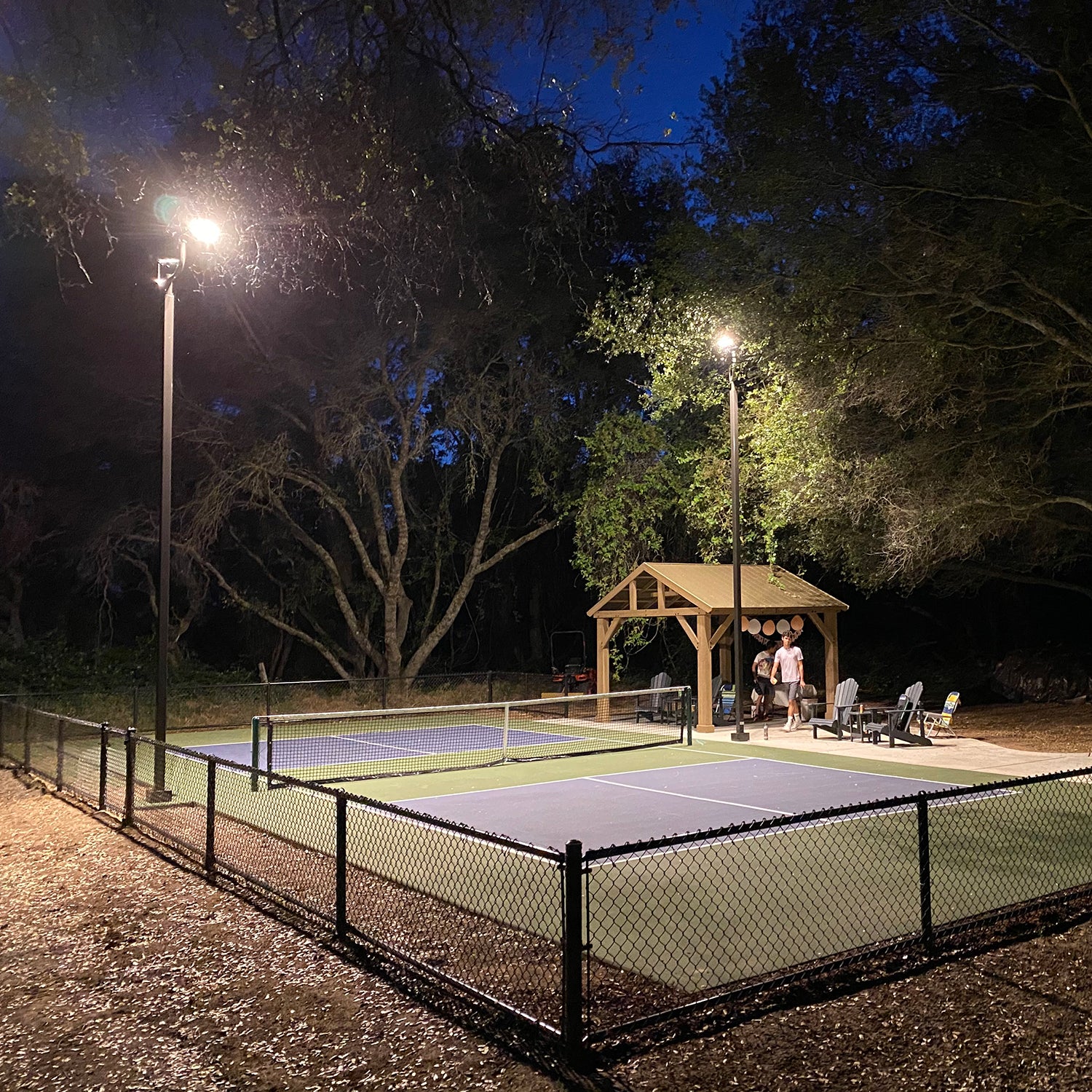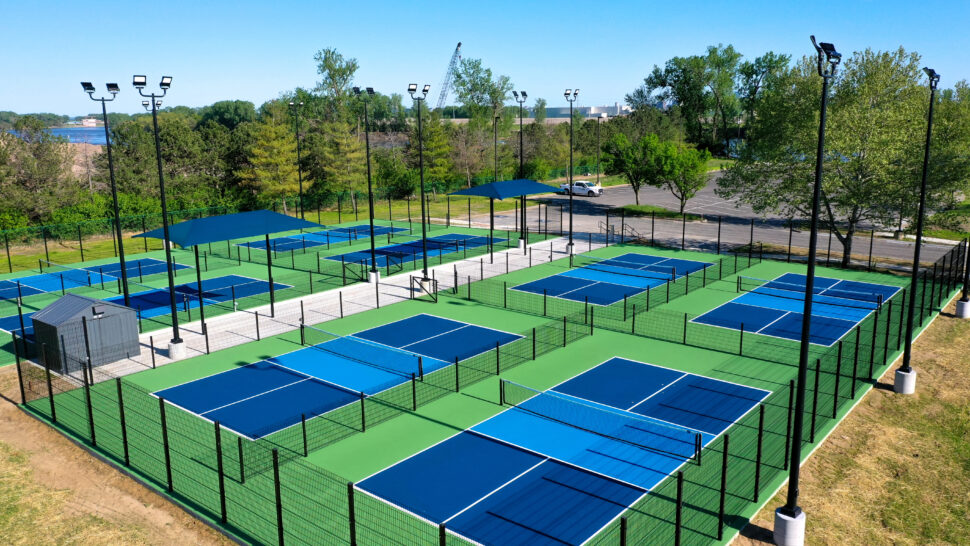Navigating Laws for Pickleball Court Construction in Your Area
Constructing a pickleball court in your area calls for a nuanced understanding of different regional policies, consisting of zoning laws, structure authorizations, and safety criteria. Engaging with regional authorities and the area is essential for guaranteeing conformity and fostering support.
Comprehending Regional Zoning Laws
When thinking about the building and construction of a pickleball court, understanding local zoning regulations is important to making certain compliance and avoiding potential legal problems. Zoning laws determine just how land can be used and commonly include specifications associated to entertainment facilities. These laws can vary dramatically by community, affecting aspects such as court positioning, noise, size, and lighting levels.
Before initiating building and construction, it is important to seek advice from the regional zoning board or planning department to determine the details policies that put on your residential property. Specific zones may restrict entertainment tasks, while others might require details licenses or adherence to specific guidelines. It is also essential to consider setbacks, which establish just how much frameworks need to be from residential property lines or other structures.
Additionally, private growths, such as house owner organizations (HOAs), might impose their very own policies pertaining to the building and construction and usage of pickleball courts. Understanding these regulations can avoid costly modifications or lawsuits down the line. Engaging with local stakeholders and neighborhood members can provide useful insights and foster support for your job, ensuring that it straightens with the neighborhood's expectations and demands.
Obtaining Necessary Structure Permits
Exactly how does one navigate the intricacies of obtaining essential structure authorizations for a pickleball court? The process starts with comprehending neighborhood policies and needs established forth by local authorities. Normally, you will need to submit a thorough site plan that details the proposed court dimensions, products, and format. This strategy should conform with zoning regulations and any particular policies concerning entertainment facilities.

When authorizations are obtained, it is important to stick to any kind of evaluation routines and needs throughout the building and construction phase. Preserving interaction with neighborhood authorities will facilitate a smoother approval procedure and aid stay clear of prospective setbacks. By completely preparing and recognizing the allowing landscape, you can efficiently navigate the intricacies associated with creating a pickleball court while continuing to be compliant with all local regulations.

Assessing Environmental Impact
A comprehensive analysis of environmental influence is vital when intending the building and construction of a pickleball court. This assessment aids identify prospective effects on regional ecosystems, water resources, and area aesthetic appeals. Key aspects to consider include site choice-- guaranteeing that the court is not built on ecologically sensitive land, such as marshes or environments for threatened varieties
Soil stability and drain patterns need to be assessed to avoid disintegration and water merging, which could negatively influence surrounding plants and wild animals. In addition, the choice of products is essential; going with sustainable and environment-friendly options reduces ecological harm.
The application of efficient stormwater administration methods is one more vital element, as it assists alleviate overflow and sedimentation. Engaging with neighborhood environmental firms can provide valuable understandings into policies and finest practices specific to your location.
Lastly, neighborhood input can be helpful in recognizing any kind of neighborhood ecological worries and promoting support for the project. By conducting a complete ecological effect evaluation, stakeholders can guarantee that pickleball court construction straightens with sustainable methods and adds positively to the community's ecological health.
Adhering To Safety And Security Specifications
Guaranteeing compliance with security standards is crucial for the effective building and operation of a pickleball court. Adhering to well-known security regulations decreases the danger of injuries and accidents, guaranteeing a safe setting for gamers.
Trick safety requirements include appropriate court measurements, surface area materials, and illumination demands. The court should satisfy the main dimensions of 20 feet large by 44 feet long for doubles play, with appropriate barrier areas to avoid injuries from wayward balls. Pickleball court construction. The surface area should be built from non-slip products to improve traction and minimize the likelihood of falls
In addition, illumination must suffice for night play, offering uniform lighting to avoid shadows that can impede presence. Regional building codes may go additionally determine specific demands for secure fencing and net height to make certain player safety and avoid unapproved accessibility to the court location.
Normal evaluations and upkeep are vital to support these requirements with time. By focusing on security conformity, court proprietors not only protect players yet also promote a positive track record within the area. This commitment to security can motivate higher engagement and satisfaction of the sport, inevitably adding to its development weblink and sustainability.

Engaging the Neighborhood in Preparation
Area involvement in the drawing board of pickleball court construction can considerably enhance the task's total success. Involving neighborhood homeowners and stakeholders promotes a sense of ownership and encourages collaborative decision-making, which can lead to broader support for the effort.
To effectively involve the area, coordinators need to start public conferences or workshops, giving a platform for homeowners to articulate their point of views and choices regarding location, layout, and facilities. Surveys and comments types can likewise be made use of to gather insights from a larger audience, guaranteeing that diverse viewpoints are taken into consideration.
Additionally, creating an area board of advisers can assist in recurring conversations and address problems throughout the preparation process. This board can include agents from various demographics, such as regional schools, recreational organizations, and neighborhood watch, thereby amplifying area depiction.
Reliable interaction is essential; updates about the project should be frequently shared by means of newsletters, social media, or neighborhood notices. By focusing on community involvement, organizers can cultivate enthusiasm, minimize potential opposition, and develop a pickleball center that really reverberates with neighborhood values and demands. This joint strategy not only improves the job however also reinforces neighborhood connections.
Conclusion
In conclusion, browsing the complexities check my source of pickleball court building and construction requires a detailed understanding of neighborhood laws, consisting of zoning laws, structure permits, and safety and security criteria. Carrying out ecological evaluations is necessary to minimize ecological influence, while neighborhood involvement can improve assistance for such projects. By adhering to these standards and cultivating partnership, effective implementation of pickleball courts can be achieved, advertising entertainment opportunities and neighborhood health. Continued persistance in these areas will certainly ensure certified and sustainable growth.
Constructing a pickleball court in your area requires a nuanced understanding of various neighborhood regulations, including zoning legislations, structure authorizations, and safety standards.When thinking about the building of a pickleball court, recognizing neighborhood zoning laws is essential to guaranteeing compliance and preventing potential legal problems. By completely preparing and comprehending the permitting landscape, you can successfully navigate the intricacies entailed in creating a pickleball court while staying compliant with all local policies.
In verdict, browsing the complexities of pickleball court construction necessitates a comprehensive understanding of local policies, including zoning regulations, structure permits, and safety standards. By adhering to these standards and promoting partnership, successful execution of pickleball courts can be attained, advertising recreational possibilities and area well-being.
Comments on “Advantages of Expert Help in Your Pickleball Court Construction Trip”